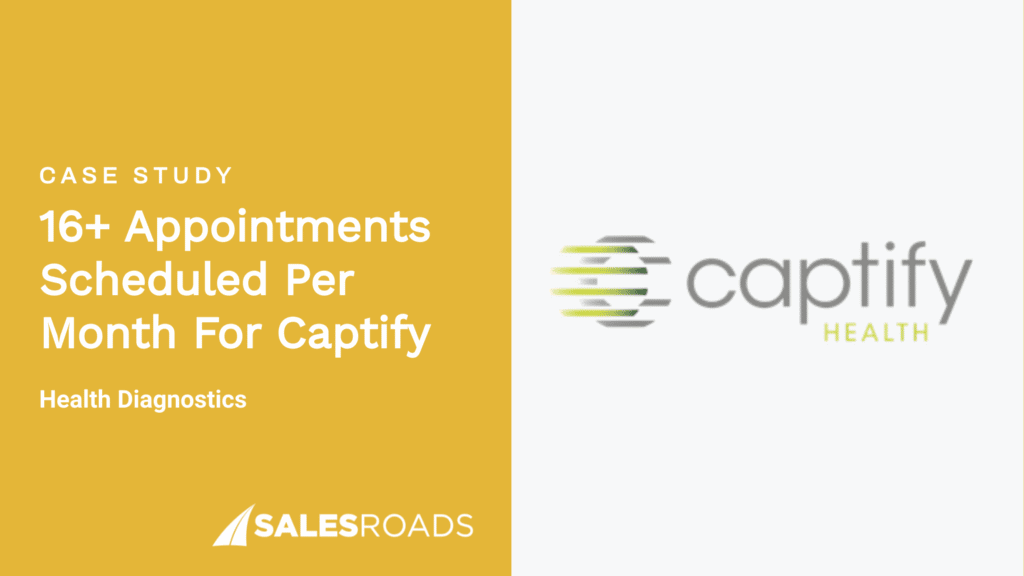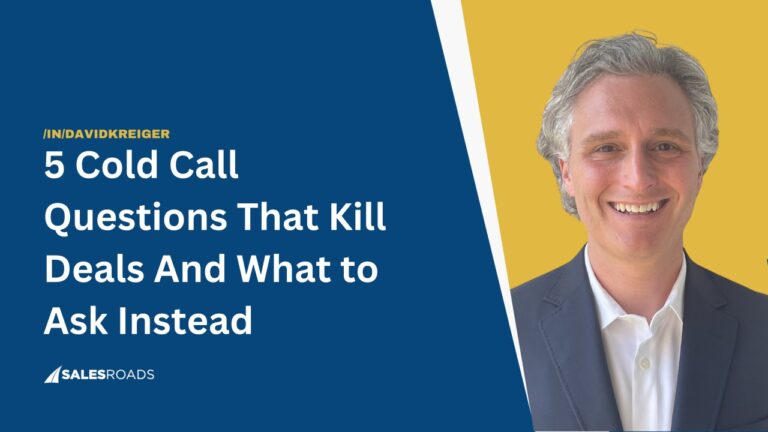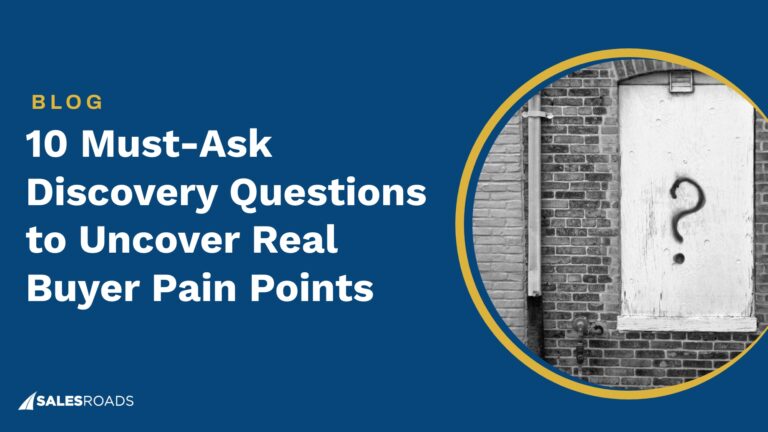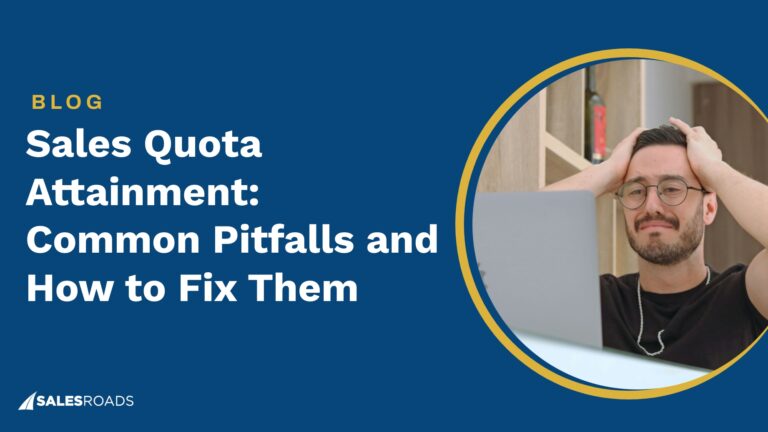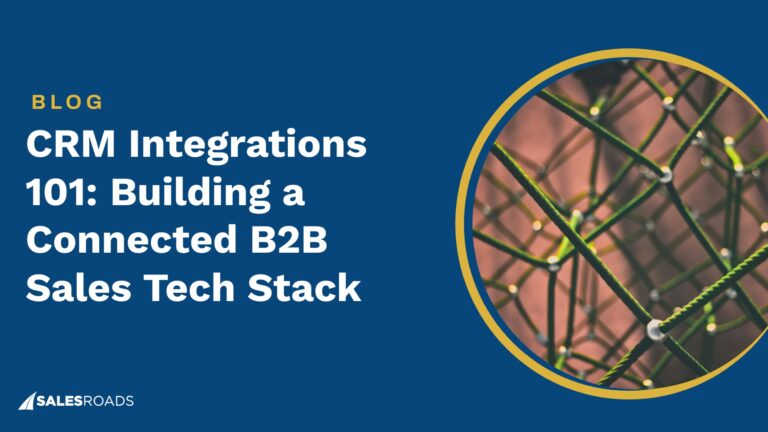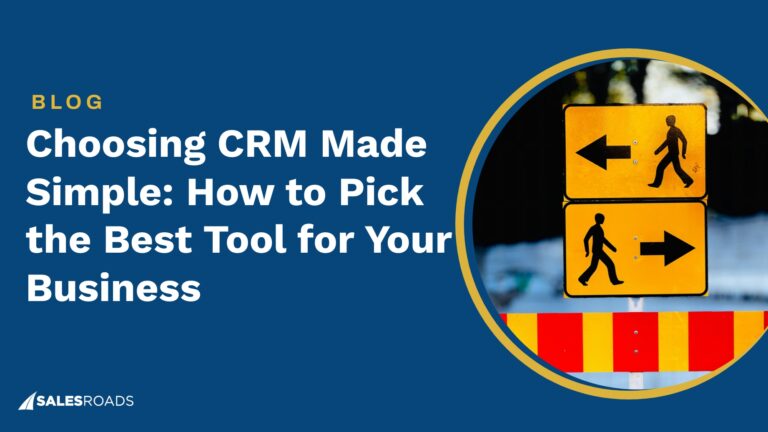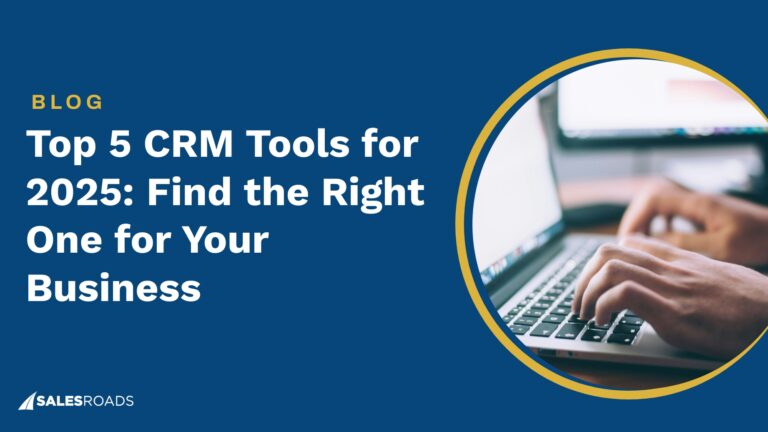You might know this feeling: tons of activity, lots of leads coming in, but your sales close rate just won’t budge. You’re hustling hard, but those deals aren’t closing as often as they should.
The truth is, boosting your close rate is about mastering the right sales closing techniques, building a high-converting sales process, and knowing when to fix the pipeline itself.
Whether you’re wondering how to increase sales conversions or trying to figure out if outsourcing lead generation is the right move, this article has you covered.
What Is a Sales Close Rate And Why It’s Your Most Critical Metric
Your sales close rate is the percentage of opportunities that turn into closed deals. It tells you how efficiently your sales team is converting leads into customers.
If you’re only measuring activity, like calls made or emails sent, you’re missing the bigger picture. Close rate goes beyond volume. It measures how effective your team is at turning interest into revenue.
Understanding and improving this metric gives you a clear path to boosting win rates and maximizing ROI. A high close rate often means your team is using strong sales closing techniques and has a high-converting sales process in place.
If your close rate is low, it doesn’t matter how many leads you generate; your revenue will suffer. That’s why tracking and improving your close rate is one of the fastest ways to increase sales conversions and drive predictable growth.
Why Volume Alone Can’t Replace Conversion
Generating more leads might seem like the solution to hit your targets. But chasing volume without focusing on your sales close rate is a short-term play.
A bloated pipeline filled with unqualified leads will slow your team down and burn resources. On the other hand, even a modest pipeline can generate strong revenue. It’s not about how many leads you have; it’s about how many you can convert.
In short, more leads won’t fix a broken process. But a better process will always increase your sales conversions.
Top Reasons Your Sales Close Rate Might Be Flatlining
Often, the real issue lies in how your team qualifies, communicates, and follows up with prospects. A poor close rate usually signals gaps in your sales closing techniques or a broken process.
Here are the possible reasons your team is experiencing low sales close rates:
Leads Aren’t The Problem, Qualification Is
Many sales teams believe that more leads will solve their conversion issues. But if your pipeline is packed and your sales close rate is still low, the issue likely isn’t volume; it’s lead qualification.
A weak qualification process fills your funnel with prospects who were never a good fit. That wastes time, drains morale, and leads to missed quotas. You can’t build a high-converting sales process on shaky ground.
Instead, focus on asking the right questions early. Is this lead experiencing the problem your product solves? Do they have decision-making power and budget? Are they actively searching for a solution, or are they just window shopping?
Improving qualification sharpens your team’s focus and keeps your pipeline clean. It allows your reps to invest their energy in prospects who are more likely to convert, leading to an immediate and sustainable improvement in your close rate.
Your Sales Pitch Doesn’t Match Buyer Intent
Even the most polished sales pitch will fail if it doesn’t align with where the buyer is in their journey. In fact, buyers are already 70% through the buying process before engaging with sales.
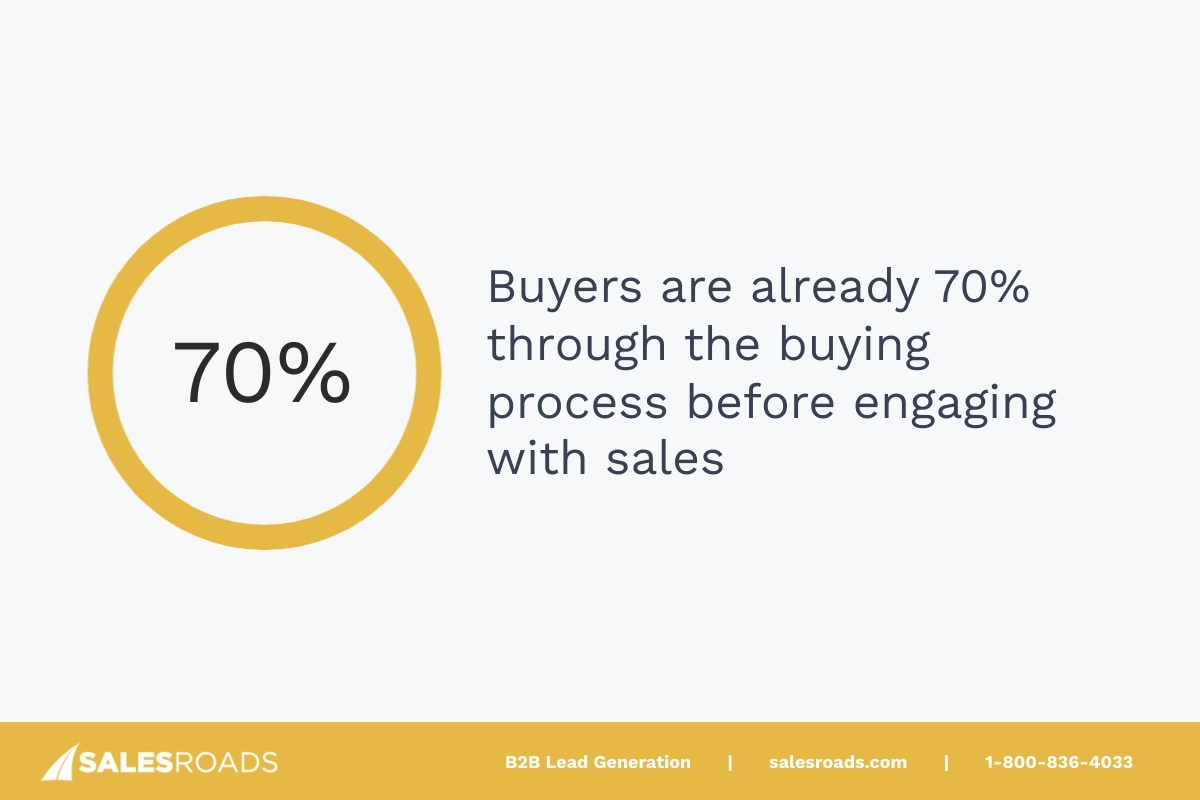
Too many reps jump straight to features and pricing, not considering where the buyer is in the journey. This mismatch creates friction and confusion, and it’s a major reason sales close rates stall.
To increase sales conversions, reps need to tailor their messaging to buyer intent. Is this a top-of-funnel lead looking to learn, or a ready-to-buy prospect comparing vendors? The pitch should reflect that difference.
Rushed Follow-Ups, Clunky Handoffs, and Zero Urgency
Even if a lead is a great fit and the pitch is strong, poor execution can kill momentum. When follow-ups drag, handoffs between teams break down, or reps fail to create urgency, deals fall apart fast.
Follow-up timing is critical. Waiting too long signals disinterest, while robotic, templated emails don’t inspire trust. Instead, every follow-up should be prompt, relevant, and customized to what was discussed.
Clunky handoffs from SDRs to AEs also damage your close rate. If a buyer has to repeat themselves or feels like they’re starting from scratch, their confidence drops.
In this episode of the Sell Like A Leader podcast, Mitchell Kasprzyk said,
“𝘛𝘩𝘦 𝘮𝘰𝘳𝘦 𝘵𝘪𝘮𝘦𝘴 𝘺𝘰𝘶 𝘮𝘢𝘬𝘦 𝘢 𝘤𝘶𝘴𝘵𝘰𝘮𝘦𝘳 𝘳𝘦𝘱𝘦𝘢𝘵 𝘵𝘩𝘦𝘪𝘳 𝘴𝘵𝘰𝘳𝘺, 𝘵𝘩𝘦 𝘭𝘰𝘸𝘦𝘳 𝘺𝘰𝘶𝘳 𝘸𝘪𝘯 𝘳𝘢𝘵𝘦.”
Here’s the conversation you can join:
Finally, urgency matters. Not in a pushy way, but by helping buyers understand what’s at stake if they delay. When urgency is absent, deals stall in limbo.
Fixing these execution gaps strengthens your sales closing techniques and makes it easier to increase sales conversions without adding more leads.
Sales Teams Relying Too Much on Outdated Playbooks
Sales reps using a formal sales playbook are 54% more likely to hit their quotas, but your playbook is only useful if it reflects how modern buyers actually make decisions. If your team is still using strategies from five years ago, you’re likely seeing the results in your flat close rate.
Today’s buyers are more informed. By the time they speak with sales, many have already researched your product and your competitors’. Old-school discovery questions and boilerplate demos no longer move the needle.
To build a high-converting process, your sales playbook needs to evolve. That means equipping reps with data-driven insights, sharper messaging, and modern tools for engagement.
Update your scripts, workflows, and objection handling techniques based on what’s working now, not what used to work. That’s how you stay competitive and start boosting win rates consistently.
How to Improve Your Sales Close Rate?
From tracking the right data to refining your sales closing techniques, there are practical strategies that help teams close more deals without burning out. A few small changes can go a long way in boosting win rates and building a high-converting sales process.
Track the Right Metrics, Not Vanity KPIs
Too often, sales teams chase surface-level metrics that look good on dashboards but don’t translate into revenue. It’s easy to get caught up in the number of meetings booked or emails sent, but those are vanity KPIs if they don’t lead to closed deals.
To truly increase sales conversions, track metrics like opportunity-to-close rate, sales cycle length, and average deal size. These provide insight into how efficiently your reps are moving deals through the pipeline.
Focus on metrics that reveal friction points. For example, are prospects stalling at the proposal stage? Are discovery calls converting into demos? When you focus on the right data, you can take targeted action to improve close rates and help your team prioritize efforts that move the needle.
Train Reps to Listen More, Talk Less
Top-performing reps know that closing a deal isn’t about delivering the perfect pitch; it’s about understanding the buyer. Almost 9 out of 10 sales professionals agree that successful selling today depends more on listening to customers than just talking to them.
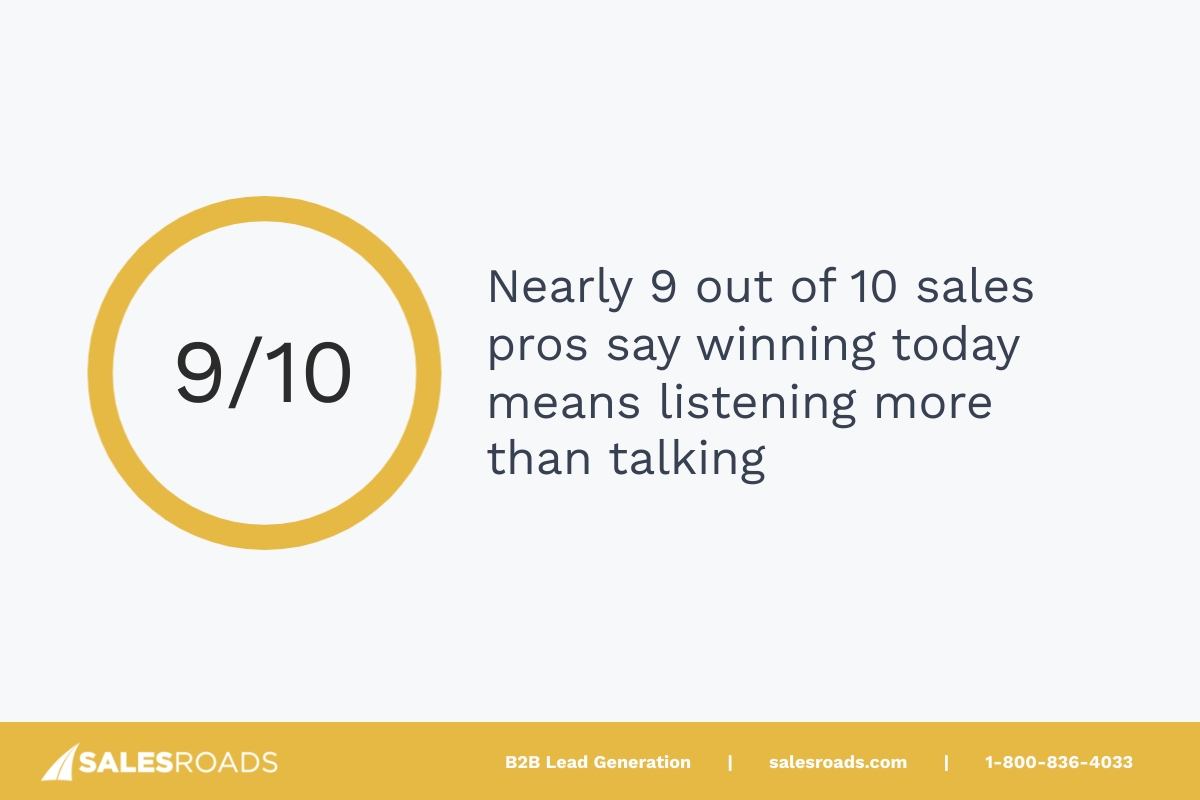
Training your team to listen actively can dramatically increase sales conversions by aligning your solution with the prospect’s real challenges.
Buyers don’t want to be sold to. They want to feel heard. When reps spend more time asking thoughtful questions and less time talking about product features, they build trust. That trust leads to better conversations and ultimately, more closed deals.
Implement Structured Objection Handling
Objections are not the end of the deal; they’re a natural part of the buying process. But without a clear framework to handle them, even strong reps can stumble.
Implementing structured objection handling helps teams confidently navigate resistance and keep deals moving forward.
Your team should know the most common objections and have a go-to approach for each. More importantly, reps must learn to uncover the real objection.
Sometimes “budget” is just a smokescreen for uncertainty about value. By probing with the right questions, reps can surface hidden concerns and address them directly.
This type of proactive strategy leads to a high-converting sales process.
Build Follow-Up Sequences That Nudge, Not Nag
Most deals aren’t closed on the first call. Companies that nurture leads make 50% more sales at a cost 33% less than non-nurtured leads.
But there’s a fine line between persistence and annoyance. A thoughtful follow-up sequence helps improve your sales close rate without pushing prospects away.
Effective follow-ups should be personalized and value-driven. Every touchpoint, whether it’s an email, call, or LinkedIn message, should offer something useful: a relevant resource, a fresh insight, or a short recap of how your solution solves their specific challenge.
Timing also matters. Use automation to ensure consistent outreach, but make sure the content doesn’t feel robotic. Mix formats to keep it human, video messages, voice notes, and tailored emails can all help maintain momentum.
When follow-ups feel like nudges instead of nags, prospects stay engaged. That’s how you increase sales conversions over time and keep deals from slipping through the cracks.
Align Sales and Marketing Around Buyer Readiness
Marketing and sales often operate in silos, but boosting win rates depends on tight alignment, especially when it comes to buyer readiness. When marketing hands off leads too early, sales wastes time. When sales gets involved too late, opportunities go cold.
To increase your sales close rate, the two teams must define what “qualified” really means. This includes shared criteria like firmographics, pain points, intent data, and buyer behavior. When everyone agrees on what a sales-ready lead looks like, you avoid misfires, and handoffs become smoother.
Work together to map the full buyer journey. What content should marketing deliver before a lead talks to sales? What follow-up should sales use based on engagement signals?
This kind of coordination leads to a more high-converting sales process, because you’re meeting buyers where they are, not where you hope they are.
In fact, research shows that sales teams aligned tightly with marketing achieve 20% annual revenue growth compared to 4% for less aligned teams.
Use A/B Testing to Refine Your Sales Messaging
If you’re not A/B testing your sales messaging, you’re guessing. Even small changes like a different subject line, call-to-action, or talk track can have a measurable impact on your sales close rate.
Start simple. Test two variations of a follow-up email or two ways of presenting pricing. Track how each performs over time. Then double down on the winning version.
Over time, you’ll develop a set of proven messages that form the backbone of a high-converting sales process.
Also, A/B testing isn’t just for tools, scripts, or templates; companies can apply it to their people, too. Testing different approaches and behaviors helps uncover how the human element impacts sales close rates, giving teams a real edge.
Here’s what David Kreiger says about A/B testing people:
Should You Outsource Lead Generation to Fix the Top of the Funnel?
If your sales closing techniques are strong but your pipeline is full of unqualified leads, the problem isn’t your team; it’s the top of the funnel. In that case, working with an expert outsourcing partner can be a smart move.
The right partner can help you fill your pipeline with high-intent prospects, giving your team more qualified conversations and improving your overall sales close rate. When lead quality improves, reps can focus on what they do best: closing deals.
But here’s the catch: not all outsourcing providers are created equal. Many focus on setting a high number of appointments, not the quality of those meetings. That kind of volume may look good on paper, but if the leads aren’t a fit, your close rate won’t improve, and neither will your revenue.
If you’re considering outsourcing, look for a partner that understands your ICP and prioritizes qualified conversations over sheer volume. When done right, outsourcing can fuel a high-converting sales process and play a key role in boosting win rates.
Bottom Line
If your sales close rate is flatlining, start by diagnosing where deals are stalling, doubling down on proven sales closing techniques, and aligning your entire process around conversion, not just activity.
If the pipeline itself is the problem, don’t be afraid to get outside help, but choose partners who value quality over quantity. Because at the end of the day, boosting win rates isn’t about doing more. It’s about doing what works consistently and intentionally.



